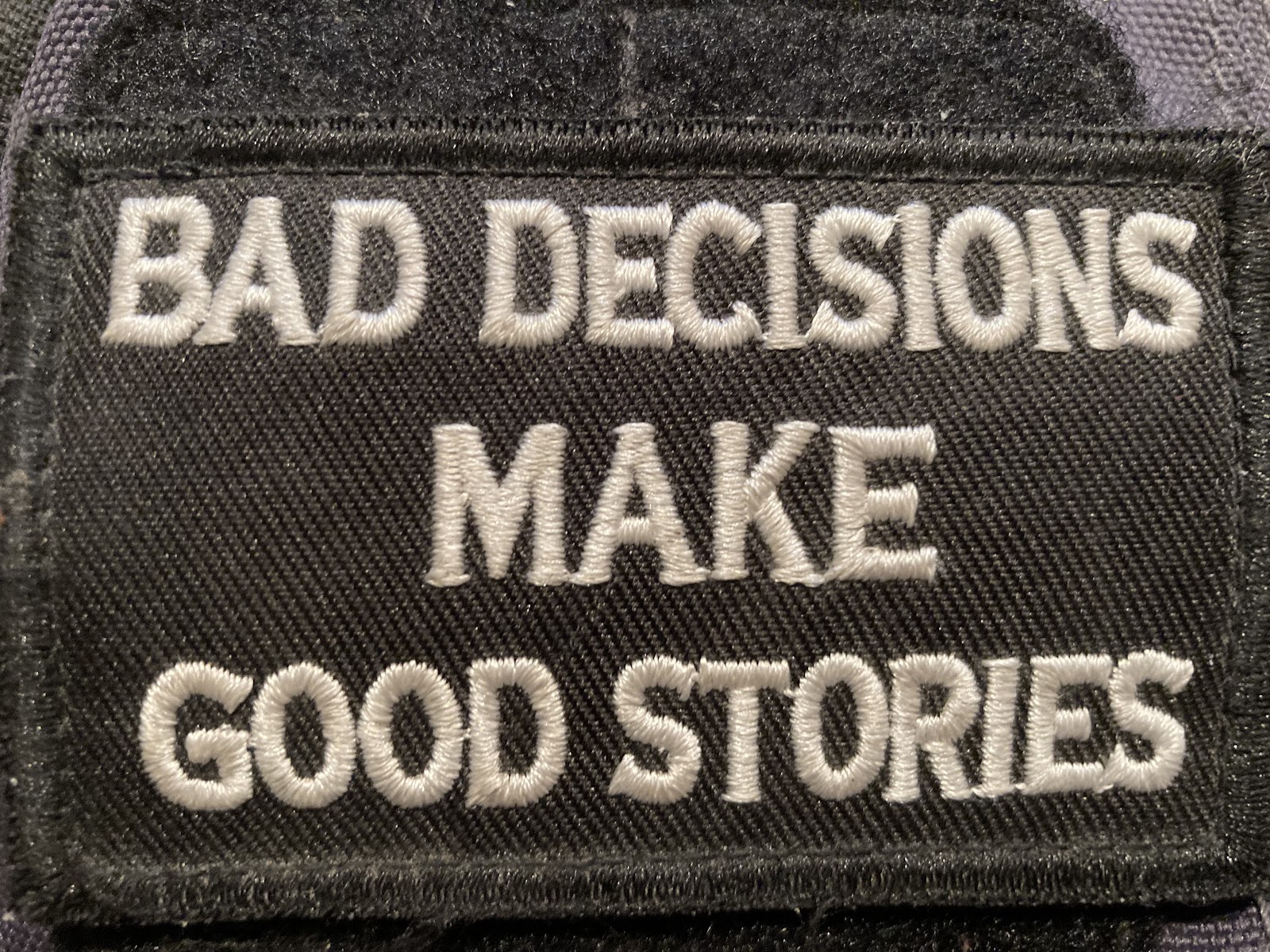Several years ago, a plot for a short, Black Friday story popped into my head. I don’t write horror or Die Hard type action fiction, but we don’t actually get a say in what ideas coalesce out of the amino acids of the ol’ mind soup. This idea was something like: An innocent bystander witnesses a murder in the parking lot of a mall on Black Friday and spends the next ten or fifteen pages (or 100 if it turned out to be a novella) running from the killer in the mall. In other words, lots of opportunities for me to play up the entire Black Friday madness and mall culture in general.
I never wrote the story.
I did write a note on a scrap of paper and stuck it in this old stationery box with all my other (as yet) unwritten story and book ideas. Periodically–okay probably every day-after-Thanksgiving–I remember this story and consider working it up into a first draft. But I don’t. It’s just not my jam. I seriously doubt this is a story I’ll ever create. If you want to try, go for it!
(Maybe someone has written a similar story by now. If you know of one, let me know in the comments. I’d actually like to read it. I just don’t want to write it.)
Last night, after a lovely Thanksgiving Day, I watched the Netflix Top 10 movie, Buy Now: The Shopping Conspiracy. This documentary was styled as an ironic AI-generated webinar for wannabe corporate executives looking to increase sales at any cost interspersed with interviews of former corporate sales gurus who now advocate changing our growth economy into a sustainable economy. Watch it here: https://www.netflix.com/title/81554996
Obviously, the timing matters. Between Black Friday and Christmas Eve, we are encouraged to buy, buy, BUY! In the movie, we are shown mountains of clothing washing up on third-world shores; plastic found in the guts of ocean fish; giant piles of discarded electronics. We are literally killing ourselves and the planet along with us in our capitalist zeal. Hey, I understand capitalism is the best we’ve come up with so far, but really? Isn’t it time for a new plan?
As I sat there, horrified but not exactly surprised, I started thinking about books. I thought about a recent article published in The Bookseller entitled “New publisher Spines aim to ‘disrupt’ industry by using AI to publish 8,000 books in 2025 alone.” See: https://www.thebookseller.com/news/new-publisher-spines-aims-to-disrupt-industry-by-using-ai-to-publish-8000-books-in-2025-alone
It’s beginning, friends. The AI disruption of our industry. In a market already flooded with books, here comes a tsunami of AI-generated content. Many of these will be ebooks, but plenty will be print, likely POD. I suppose this is better than printing and warehousing and then destroying the copies that fail to sell, but still. I began to wonder about the lifespan of today’s literary “products.” Are these cheaply produced POD books saved, treasured, passed along to younger generations? Or are they consumed and thrown away like last season’s sweatshop garment?
For years, many indie (self) publishing gurus advocated quickly writing and releasing books to gain market share, surfing the Amazon algorithm to financial “success.” Perhaps the best-known of these strategies, The 20 Books to 50 K method, encourages a “high volume, low price” strategy. Pump out those books as fast as you can in hopes of establishing a backlist and making a living. Fine. Good. It works, or at least, it did.
But what happens when EVERYONE does it?
If we think of books as products, like widgets, how valuable are the widgets when everyone’s pumping out widgets? And where are all the widgets going once they are sold?
Hey, I get it. I’ve published a couple of books. I’d like to publish some more. It would be nice to think I could make a living at this writing thing. Also, I’m not a fast writer. The thought of writing a book in twelve days turns me cold. I admit, I’m predisposed to disdain this mindset. Because I doubt I could do it even if I wanted to. So, yeah, this entire essay might just be a bit self-serving. But hear me out.
I think it’s worth it for us in the publishing industry to consider sustainability. How much electricity is consumed with our Kindles and ebooks? How many trees are turned into paper? Where do the books end up? In a landfill? Burned? Adding to the carbon load? What happens when AI companies like Spines begin releasing 8,000 titles into the market per year? What happens when 100 similar companies spring into being?
Will writing and publishing 20, even 40 books work in that market? Is our ambition worth the cost to the planet? What could we writers do to create a manageable, sustainable, and profitable-for-more-with-less market?
I visited Atlanta last week. The Margaret Mitchell museum, housed in the apartment where the author wrote Gone With the Wind, finally reopened after a remodel that started in 2020. Mitchell made a name for herself with ONE book. One. Yes, the book is problematic (and the museum does a good job pointing this out), but we can’t deny that GWTW made a giant splash and continues to be one of the best-selling novels of all time.
 |
| The desk where Margaret Mitchell wrote Gone With the Wind |
One book. Could what worked for Mitchell work for us? What if we all slowed our roll? What if lower supply led to greater demand and prices?
What if we created readership thirst?
Maybe we should consider writing fewer books. Maybe we make designer books instead of fast-fashion books. Maybe we leave the silly Black Friday stories in the idea box and instead create books with substance and staying power.
Just a thought.
What do you think? As readers? As writers? I’m sure this may have touched some nerves. Let me have it.
—--
Check out my Substack and sign up for my newsletter. https://shelleyburbank.substack.com/













